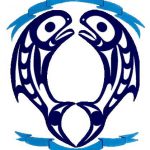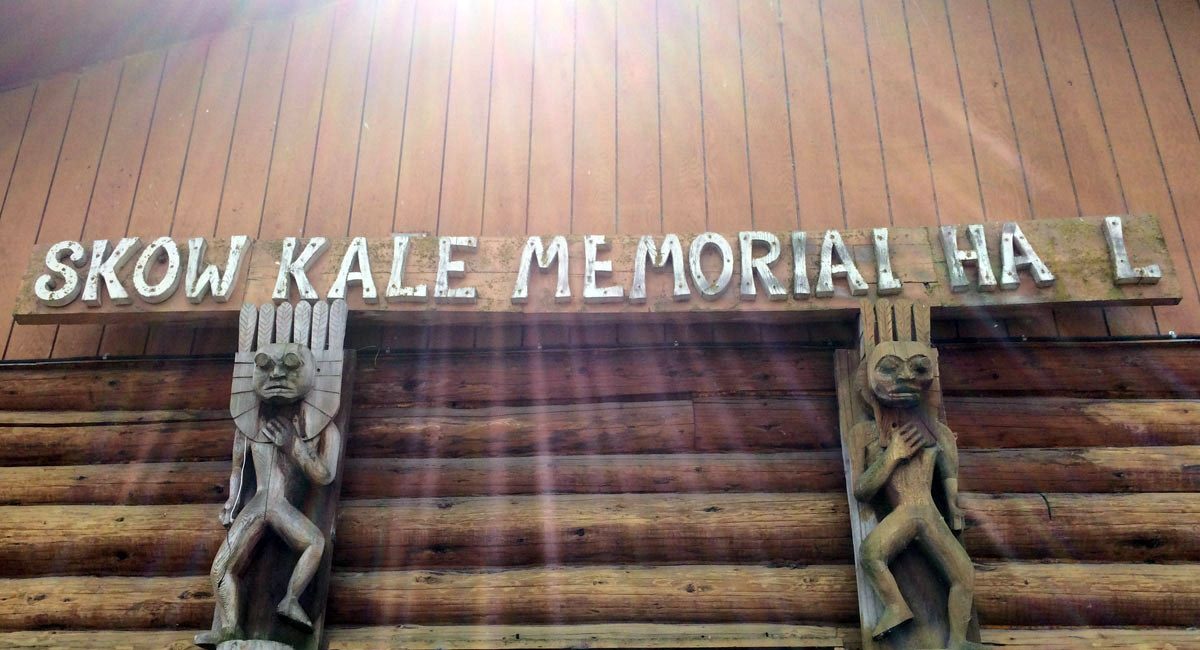Other SXTA Communities
Sq’ewqéyl is located in Sardis, B.C. Sq’ewqéyl has two reserves for Sq’ewqéyl – I.R. #10 and I.R. #11. Today Sq’ewqéyl totals 68.4 hectares and shares an additional 64.7 hectares of the Grass Reserve lands with eight neighboring First Nation communities within Chilliwack. It also shares 10.3 hectares of Peqwxe::yles reserve lands in Mission and 23.5 hectares of the Coqualeetza lands with 20 bands in the Stó:lo Nation.
About the name – Sq’ewqéyl
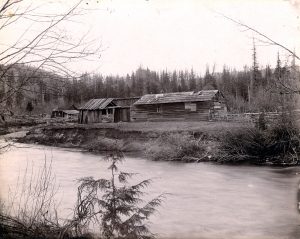 Sq’ewqéyl, altered by the Europeans like most Halq’eméylem words, was spelled Skulkayn (later spelled Skowkale). In the Halq’eméylem language Sq’ewqéyl means “going around a turn.” Sq’ewqéyl is a geographic settlement and is spirited; the settlement is also associated with a cemetery and the significance of the name Sq’ewqéyl means “at a bend in the Chilliwack River”.
Sq’ewqéyl, altered by the Europeans like most Halq’eméylem words, was spelled Skulkayn (later spelled Skowkale). In the Halq’eméylem language Sq’ewqéyl means “going around a turn.” Sq’ewqéyl is a geographic settlement and is spirited; the settlement is also associated with a cemetery and the significance of the name Sq’ewqéyl means “at a bend in the Chilliwack River”.
Sq’ewqéyl – Its History
In 1882., the Indian agent states that in his opinion, the Skowkale and Yakweakwioose reserves are “the best in my agency.”
1884: 14-yr old Stó:lo boy named Louie Sam is lynched by a mob of American vigilantes on the Canadian side…Several hundred angry Stó:lo men gather in Chilliwack (Skowkale), … and make plans to retaliate.
1886: Methodist missionary Charles M. Tate opens an Indian school at his home in Chilliwack called the “Coqualeetza Mission Home,” it was not located on the contemporary Coqualeetza complex but “on Knight Road, near Skulkayn (Skowkale) Indian Reserve.” Note: Some of the students buried in the cemetery at Coqualeetza were moved to Sq’ewqéyl.
1896: …Chief Billy of Skowkale… are referred to as examples of excellent farmers, each cultivating about 35 acres (14 hectares)…
1896: Bill Uslick, a Stó:lo man from Chilliwack (Skowkale) is the first Aboriginal to be arrested and convicted under the anti-potlatch law…
1968-1969: Skulkayn (Skowkale) Indian band members open offices in buildings on the Coqualeetza site and begin maintaining the grounds and buildings. 1971: Through the Skowkale History Project, the Stó:lo begin collecting and preserving their own historical records.
Source: Sq’ewqéyl Timeline: Excerpts from Stó:lo Atlas
Skulkayn was a main village at the bend in Chilliwack River Road. The village was built on both sides of the river on the sites now marked by IR #10 & IR #11, both listed as Skulkayn. Robert Joe has reported to have seen one or 2 pit houses here. Migration According to Stó:lo oral traditions, the Chilliwack’s slowly migrated down the Chilliwack River Valley from Chilliwack Lake and gradually spread out onto the Chilliwack floodplain (between Vedder Crossing and the Fraser River). Bob Joe describes the migration: “The main headquarters of the Chilliwack tribe was up at Chilliwack Lake, Sxóchqel. As time went on, they kept moving down. They used the Chilliwack River down as far as the stone house, Láxewey. Qwemílíts, that’s Chilliwack Mountain, now they have their tribal territories. They moved their headquarters down four times. The last headquarters was down here toward Higginson Road. They call that Sxwó:yxwele. When they disbanded from Sxwó:yxwele, some of them went down to Láxewey (Lackaway), Qwemílíts, Shxwá:y (Skway), Qweqwe’ópelhp (Kwawkwaw- Apilt), Sxwoyehále (Squiala), Áthelets (Aitchelitz). Some of them come up this way and they made their homes down here at Kitabush (Kickbush), that’s where one of the largest bands was, and Sq’awqé:yl, Skulkayn, then Yeqwyeqwi:ws, then Ch’iyáqtel here. One of the first villages at which the Sxwó;yxwey was used was Sxwó:yxwele (“place of the sxwaixwe mask”), near Yeqwyeqwi:ws on Higginson Road in Sardis. One of the great ceremonial longhouses was built there. Today, four ceremonial longhouses are still in use by the Chilliwack’s: at Sq’ewqéyl, Skway, Squiala and Yeqwyeqwi:ws.”
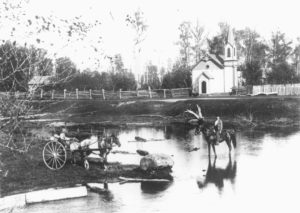 Testimony of Chief Sepass of Skulkayn Migration Testimony of Chief Sepass of Skulkayn as related to him by his grandfather, who in turn received it from his grandfather. “The Tsowahlie Indians and the Indians at Yarrow station were the first Indians in the Chilliwack Valley. The villages of Skulkayn, Squihala and Sumas are of a much later date; and the whole valley was more or less covered with water from the Chilliwack River, the main branch of which emptied into the Sumas Lake. Timber jams opened new channels in different directions, first into McGillivray’s Creek, next to the Aitchelitz, and more recently into the Old Chilliwack, past Skulkayn to Squihala. The land along the banks becoming dry, the Indians left their homes at Tsowahlie and settled at Skulkayn, Tzeachten, Squihala, and other places. The old bed of the Chilliwack River flowing into Sumas Lake became dry, excepting a small creek from the foothills, which the white people have named Vedder River or Vedder Creek, before the Chilliwack River went to its old bed. After the river left its first channel, the Indians named the empty channel Tlualmin – ‘the river that ran away.’ The name is still given to the river by the Indians.”
Testimony of Chief Sepass of Skulkayn Migration Testimony of Chief Sepass of Skulkayn as related to him by his grandfather, who in turn received it from his grandfather. “The Tsowahlie Indians and the Indians at Yarrow station were the first Indians in the Chilliwack Valley. The villages of Skulkayn, Squihala and Sumas are of a much later date; and the whole valley was more or less covered with water from the Chilliwack River, the main branch of which emptied into the Sumas Lake. Timber jams opened new channels in different directions, first into McGillivray’s Creek, next to the Aitchelitz, and more recently into the Old Chilliwack, past Skulkayn to Squihala. The land along the banks becoming dry, the Indians left their homes at Tsowahlie and settled at Skulkayn, Tzeachten, Squihala, and other places. The old bed of the Chilliwack River flowing into Sumas Lake became dry, excepting a small creek from the foothills, which the white people have named Vedder River or Vedder Creek, before the Chilliwack River went to its old bed. After the river left its first channel, the Indians named the empty channel Tlualmin – ‘the river that ran away.’ The name is still given to the river by the Indians.”
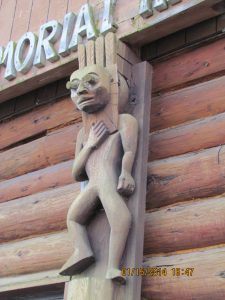 Excerpt: Archives of British Columbia—Raley Collection Chief Billy Sepass (Khal-agh-il-til) of Skulkayn First Nation and the Skulkayn Church With the gold miners and the settlers also came the missionaries. Chief Billy Sepass adopted the white man’s religion but still honoured his native spirit and participated in the potlatch and ceremonies of his people. Churches for the Indians were established at Skulkayn and at Soowahlie Reserves. He was a master of the language of the Ancient Chilliwack’s, o f t h e Halq’eméylem language, and of the Chinook jargon, the trade language used by the Indians and early settlers as their common means of communication. Chief K’hhalserten Sepass passed away in 1943, leaving a legacy of achievements. Source: “
Excerpt: Archives of British Columbia—Raley Collection Chief Billy Sepass (Khal-agh-il-til) of Skulkayn First Nation and the Skulkayn Church With the gold miners and the settlers also came the missionaries. Chief Billy Sepass adopted the white man’s religion but still honoured his native spirit and participated in the potlatch and ceremonies of his people. Churches for the Indians were established at Skulkayn and at Soowahlie Reserves. He was a master of the language of the Ancient Chilliwack’s, o f t h e Halq’eméylem language, and of the Chinook jargon, the trade language used by the Indians and early settlers as their common means of communication. Chief K’hhalserten Sepass passed away in 1943, leaving a legacy of achievements. Source: “
Source: The Chilliwacks and their Neighbors”, Oliver N. Wells
Sq’ewqéyl – Its Fish Hatchery
The Skulkayn fish hatchery is located beside the Chilliwack River at 7459 Chilliwack River Road on the Skulkayn Reserve. The hatchery has released more than a million Coho fry since it was built in 1978 and in operation since 1982. Currently, the hatchery produces between 20-50,000 Coho fry which are released into the Little Chilliwack River.
Source: SHREP- a concept group, The Sherlock Group; Joy Hall
Sq’ewqéyl – Population
The registered population of Sq’ewqéyl now is just over 230 people.
